
Toxins
Scope & Guideline
Empowering the global community with vital toxicology research.
Introduction
Aims and Scopes
- Biochemical and Molecular Characterization of Toxins:
Research articles often delve into the detailed biochemical profiles of venoms and toxins from various organisms, including snakes, spiders, and other arthropods, elucidating their molecular structures and mechanisms of action. - Therapeutic Applications of Venoms:
The journal highlights studies that explore the potential of venom-derived compounds as therapeutic agents, including their anti-cancer, analgesic, and neuroprotective properties. - Pathophysiological Mechanisms of Toxicity:
Many published works focus on the mechanisms by which toxins induce physiological damage, including studies on inflammation, oxidative stress, and kidney injury related to venom exposure. - Venomics and Proteomics:
The journal emphasizes modern proteomic and genomic techniques for the analysis of venoms, fostering a deeper understanding of toxin diversity and their evolutionary significance. - Environmental and Ecological Aspects of Toxins:
Articles also cover the ecological roles of toxins in predator-prey interactions and their impact on biodiversity, providing insights into the evolutionary adaptations of venomous species.
Trending and Emerging
- Immunomodulatory Effects of Toxins:
Recent publications have increasingly focused on the immunomodulatory properties of various venoms, exploring how these compounds can influence immune responses, particularly in the context of diseases like rheumatoid arthritis. - Bioprospecting for Anti-Cancer Molecules:
There is a growing interest in using venoms for bioprospecting, particularly for identifying compounds with potential anti-cancer properties, as evidenced by studies targeting glioblastoma and other malignancies. - Neuroprotective Properties of Venoms:
Emerging research highlights the neuroprotective effects of specific toxins, with studies investigating how these compounds may mitigate neurodegenerative conditions and provide insights into new therapeutic avenues. - Advanced Methodologies in Toxin Research:
The use of advanced techniques such as high-performance liquid chromatography (HPLC), proteomics, and transcriptomics is on the rise, allowing for a more detailed analysis of venom composition and function. - Environmental Impact of Venomous Species:
There is an increasing recognition of the ecological implications of venomous species and their role in ecosystems, with more studies focusing on the environmental factors influencing venom composition and toxicity.
Declining or Waning
- Traditional Antivenom Development:
There has been a marked decrease in publications focused solely on traditional antivenom development, as the field shifts towards exploring more novel therapeutic approaches and biopharmaceuticals derived from venom. - General Toxicological Reviews:
The journal has seen a reduction in broad toxicological reviews that do not focus on specific toxins or venoms, indicating a shift towards more specialized and detailed studies. - Basic Toxicology Studies:
Research that focuses solely on basic toxicology without the context of venom or toxin application in medicine is becoming less prominent, as the field increasingly emphasizes applied research with clinical implications.
Similar Journals

Toxics is a leading international journal published by MDPI that has been dedicated to advancing the knowledge in the fields of toxicology, environmental health, and chemical safety since its inception in 2013. With an impressive Open Access model, it ensures that all research findings are readily available to a global audience, fostering collaboration and innovation across academia and industry. The journal is esteemed for its rigorous peer-review process and holds notable rankings, including Q1 status in Chemical Health and Safety and Q2 in both Health, Toxicology and Mutagenesis and Toxicology, reflecting its impact on critical research areas. Based in Basel, Switzerland, Toxics provides a platform for researchers, professionals, and students to disseminate significant findings on the implications of toxic substances in health and the environment, aiming to improve public health outcomes and inform regulatory decisions. With its ongoing commitment to high-quality research and relevant access options, Toxics continues to be an essential resource in the domain of toxicology and environmental sciences.
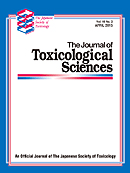
JOURNAL OF TOXICOLOGICAL SCIENCES
Leading the Charge in Toxicological DiscoveriesThe Journal of Toxicological Sciences, published by the Japanese Society of Toxicological Sciences, is a prominent academic journal dedicated to the comprehensive study of toxicology and its related fields. Since its inception in 1976, the journal has provided a vital platform for researchers and professionals to disseminate innovative findings and insights in toxicology, with a focus on both experimental and clinical studies. Positioned in the Q3 quartile across various relevant categories, including Medicine (miscellaneous) and Toxicology as of 2023, the journal plays an essential role in advancing our understanding of toxic substances and their effects on biological systems. Although currently not open access, the journal maintains high academic standards and is indexed in Scopus, ranking #96 in Toxicology. Offering unique perspectives from Japan, it encourages global collaboration and discourse among toxicologists, making it an invaluable resource for students, researchers, and industry professionals alike.

ARCHIVES ITALIENNES DE BIOLOGIE
Advancing Biological Insights Since 1952ARCHIVES ITALIENNES DE BIOLOGIE, published by PISA UNIVERSITY PRESS, serves as a distinguished platform for the dissemination of research in the fields of Cell Biology, Medicine, and Physiology. Established in 1952, this journal has maintained a commitment to advancing knowledge through diverse biological studies, making it an essential resource for researchers and professionals alike. Though ranked in the Q4 quartile in various biological categories as of 2023, ARCHIVES ITALIENNES DE BIOLOGIE continues to provide a vital avenue for emerging studies and novel ideas in the biological sciences, particularly for scholars seeking to expand their understanding of fundamental biological processes. The journal's rich history and ongoing publication prowess reflect a dedication to fostering academic inquiry within the scientific community. Although it does not currently offer open access options, researchers are encouraged to explore its archives and engage with pioneering research published in its pages.

ENVIRONMENTAL TOXICOLOGY
Understanding Toxins: Protecting People and PlanetENVIRONMENTAL TOXICOLOGY, published by Wiley, is a premier academic journal dedicated to the multifaceted study of toxic substances in the environment and their effects on human health and ecosystems. With the ISSN 1520-4081 and E-ISSN 1522-7278, this journal holds a prestigious position in the field, being ranked in the Q1 category across various relevant disciplines, including Health, Toxicology and Mutagenesis, and Management, Monitoring, Policy and Law. The journal regularly publishes high-quality research articles, reviews, and policy discussions aimed at understanding the implications of environmental toxins from 1980 to the present, contributing to the body of knowledge critical for the safety and sustainability of our environment. Researchers and professionals will find a treasure trove of information that not only highlights current trends and methodologies but also sets the stage for future advancements in toxicology. As a key resource, it provides valuable insights necessary for policy-making, environmental management, and public health, reinforcing its significance in the ever-evolving fields of toxicology and environmental science.
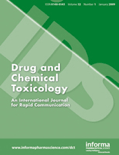
DRUG AND CHEMICAL TOXICOLOGY
Empowering public health through toxicology research.Drug and Chemical Toxicology is a well-respected journal in the fields of toxicology, pharmacology, and public health, published by Taylor & Francis Ltd. Since its inception in 1978, this journal has diligently explored the effects and mechanisms of chemical exposures on health and the environment, fulfilling a crucial role in advancing scientific understanding and safeguarding public health. The journal is indexed across prestigious databases and features an impressive array of articles categorized within the Q2 and Q3 quartiles across various categories in 2023, reflecting its significance in Chemical Health and Safety as well as Environmental and Occupational Health disciplines. With an extensive reach and a focus on interdisciplinary research, Drug and Chemical Toxicology offers a rich repository of original research, reviews, and methodological advancements, catering to a diverse audience of researchers, professionals, and students dedicated to the betterment of safety and health standards. Although not an open-access publication, its articles are widely accessible to the academic community, ensuring that critical innovations and insights are shared for the greater good.
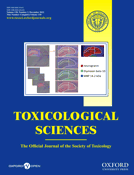
TOXICOLOGICAL SCIENCES
Empowering Research, Protecting HealthTOXICOLOGICAL SCIENCES, published by Oxford University Press, is a premier journal in the field of toxicology that has been a cornerstone of scientific discourse since its inception in 1981. With an impressive 2023 impact factor and ranked in the Q1 category for Toxicology, this journal is highly regarded among researchers, professionals, and students dedicated to pharmacology and toxicology. The journal is committed to advancing the understanding of toxicological science, covering a breadth of topics that include the mechanisms of toxicity, risk assessment, and the regulatory aspects affecting public health. With an ISSN of 1096-6080 and an E-ISSN of 1096-0929, TOXICOLOGICAL SCIENCES facilitates open access scholarly work, ensuring that critical research reaches a global audience and promotes collaborative learning. As it converges towards 2024, the journal remains pivotal in shaping the future of toxicology research, providing insights that are essential for developing safer chemicals and protecting environmental health.
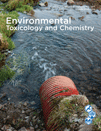
ENVIRONMENTAL TOXICOLOGY AND CHEMISTRY
Pioneering research for a safer, cleaner environment.ENVIRONMENTAL TOXICOLOGY AND CHEMISTRY is a premier journal published by Wiley that has established itself as an essential resource for researchers, professionals, and students in the fields of environmental chemistry and toxicology. With a robust trajectory since its inception in 1982, the journal offers critical insights into the interactions between environmental pollutants and biological systems, aiming to advance our understanding of the impacts of toxins on health and ecosystems. Recognized in the top quartile (Q1) of both Environmental Chemistry and Health, Toxicology, and Mutagenesis categories as of 2023, the journal is respected for its rigorous peer-reviewed content and high impact factor. It ranks 33rd out of 148 in Health, Toxicology and Mutagenesis and 48th out of 147 in Environmental Chemistry according to Scopus metrics, placing it firmly within the most influential publications in these fields. Although it does not currently offer open access, the journal remains a vital conduit for disseminating cutting-edge research and innovative methodologies that address pressing environmental challenges.

Toxicon-X
Empowering Discovery in the Realm of ToxicologyToxicon-X is a prestigious journal published by ELSEVIER, specializing in the dynamic field of toxicology. With an impact factor indicative of its excellence and rigor—ranked Q1 in Toxicology as of 2023, and positioned at #40 out of 133 in Scopus's Pharmacology, Toxicology, and Pharmaceutics category—this journal is a vital resource for researchers, practitioners, and students alike. Since its inception in 2019, Toxicon-X has embraced an Open Access model, enhancing accessibility and transparency of research findings. This ensures that crucial studies on toxic agents and their effects reach a broader audience, driving advancements in public health and safety. The journal is based in the United Kingdom and caters to a diverse international readership, with its scope encompassing novel research, reviews, and insights into emerging toxicological challenges. As we move towards the 2024 convergence year, Toxicon-X remains committed to fostering a deeper understanding of toxic substances, their mechanisms, and implications for human and environmental health.
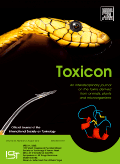
TOXICON
Unveiling the Science Behind Toxicological ChallengesTOXICON is a prominent peer-reviewed journal dedicated to advancing the field of toxicology and its related disciplines. Published by PERGAMON-ELSEVIER SCIENCE LTD, this journal has been a crucial resource for researchers since its inception in 1962, with a focus on disseminating high-quality research until 2024 and beyond. TOXICON features comprehensive studies spanning the biochemical, biochemical, and regulatory aspects of toxology, making it essential for researchers, professionals, and students alike. With a current impact factor that places it in the Q3 category of Toxicology and a Scopus rank of 67 out of 133 in its field, it serves as a valuable platform for innovative findings and discussions. Although it does not offer open access options, TOXICON's rigorous editorial standards ensure that published work meets the highest scholarly criteria, thereby enhancing its contribution to toxicological science.
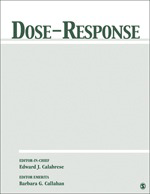
Dose-Response
Exploring the Nuances of Chemical Exposure and Public HealthWelcome to Dose-Response, a premier open-access journal published by SAGE Publications Inc., dedicated to advancing the understanding of dose-response relationships in chemical exposure, health, toxicology, and public health. Established in 2003, this journal has quickly become an invaluable resource for researchers and professionals in the fields of public health, environmental science, and toxicology, boasting a commendable impact factor and a notable ranking in multiple categories, including Q2 in Public Health and Environmental and Occupational Health. With its converged years stretching from 2008 to 2024, Dose-Response aims to publish high-quality articles that contribute to the evaluation of health risks and benefits, ensuring that essential research reaches a global audience. Its open-access model provides unrestricted access to groundbreaking studies, fostering collaborative efforts among scientists and practitioners to inform policy and improve public health outcomes.